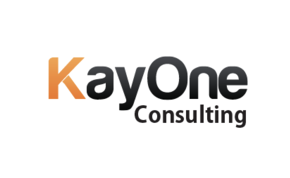Family Business Valuation: The Importance and Key Factors
India holds the third rank in the number of family-owned businesses in the country. Identifying and streamlining the valuations in this sector is increasingly becoming important because family businesses contribute more than 70% of India’s GDP. But the question is – “Do family businesses know what they are worth?”
In many countries, legislation requires public companies to report their financials quarterly. Family businesses, usually privately owned or structured as partnership firms, often differ from this description. Family businesses may go years without publishing proper financial statements and knowing their true worth. This is one of the most challenging aspects of a family business valuation exercise.
While many business valuation articles on the internet discuss this in general, in this article, we aim to bring out the methodologies and challenges in valuing family businesses.
Challenges in Family Businesses
Many family-owned business owners many challenges – differences in attitudes, aspirations, and priorities of the family members. For the family’s senior members, it becomes an enormous challenge to keep the business and family intact.
People make sacrifices to maintain the balance and keep the momentum going. However, one of the most ignored areas is the valuation of the family business. How much the business is worth?
Getting formal family business valuation done by third parties is relatively uncommon. However, some situations warrant a proper family business valuation report:
- Estate transfer
- For potential buyers
- Selling to other family members
- Marital disputes
- Success planning
- Disinvestments or hive-offs
- Seek outside investments
The challenge to business leaders is that most valuations take a historical approach to valuation. They require a formal structure to be in place for several years, with proper financial discipline. Most family businesses fail to meet these requirements and face a challenge when posed with a family business valuation exercise.
Commonly Used Methods in Family Business Valuation
We look at the commonly used methods in family business valuation that a valuation analyst usually adopts:
Capitalization of Future Earnings Method
Most family businesses have a history of existence and stable earnings. This presents a suitable business case for using the capitalization of future earnings method.
This method uses the future estimated benefits to value the family business – usually earnings or future cash flows. A capitalization rate then translates these future cash flows or earnings into a business value. This method assumes tangible and intangible assets to be indistinguishable parts of the business. In other words, the critical component of the value of the business is its ability to generate future earnings/cash flows.
The biggest challenge of using this method is arriving at the capitalization rate, which could be a source of disagreement and friction amongst the family members. One of the most significant drawbacks of this method is that it ignores the assets on the balance sheet, such as land, buildings, intellectual property, and so on.
Discounted Cash Flow Method
A discounted cash flow method is often considered in the valuation process and uses future cash flows to arrive at the value of the business. A discounted cash flow involves forecasting the appropriate cash flow stream over a proper period and then ignoring it back to a present value at a reasonable discount rate. This discount rate considers the time value of money, inflation, and the risk inherent in asset ownership or security interest being valued.
To conduct a DCF, you must project the financials for the future – usually 5-7 years; Then use an appropriate discount rate to discount these future cash flows to arrive at the family business valuation number. You need sustainable and predictable cash flows to use this method reliably.
Adjusted Net Assets Method
If your family business has extensive investments in assets such as real estate, farmland, and so on, you can use the net assets method. The adjusted net asset method is a business valuation technique that changes the stated values of a company’s assets and liabilities to better reflect its estimated current fair market values.
A valuation expert can help you find the best value for your family business. There is no ‘one size fits all’ solution to address the valuation game.
Issues in Family Business Valuation
There are two significant issues in valuing family businesses:
- Management issues: Lack of a formal governance mechanism, lack of succession planning, and reliance on key personnel are common management issues that could negatively impact the business value.
- Process Issues: Issues such as lack of financial discipline, lack of proper financial reporting, and documented processes are all contributors to negatively influencing the value
In my experience, these pitfalls typically fall into two categories: management issues and operational issues.
On the management side, I have seen businesses suffer in valuation because of a formal board, lack of succession planning for directors, which leaves the business vulnerable to loss of key personnel; improper employment of family members in senior positions, and inadequate family governance structures (such as a family council and family constitution.)
On the operational side, a lack of business strategy, a lack of documented systems and procedures, and a lack of robust financial reporting can all damage a valuation exercise.
Developing a valuation method for your business is more than just good business sense; it can be beneficial when dealing with bankers, external stakeholders, and the open market in general. Being able to immediately determine the health of a business, its future direction, and the importance of that strategy can help communicate that value to outsiders unfamiliar with family businesses.
The importance of business valuation is often ignored in many family businesses. A valuation methodology can also help family business leaders understand the critical drivers of business value. While conducting a full-scale valuation exercise can be helpful, it doesn’t need to happen often as long as business leaders know how to quickly estimate value and assess whether improvements to their key drivers have been achieved.
Even if the next generation will be taking over the realms of your business, consider using buy-sell agreements as a guide to help them navigate the challenges of inheriting your business. This will be helpful in unforeseen situations like death, mental incapacitation, or if one of the partners decides to leave the business. Proper legal documentation and a professional valuation will help the business if such an event happens.




